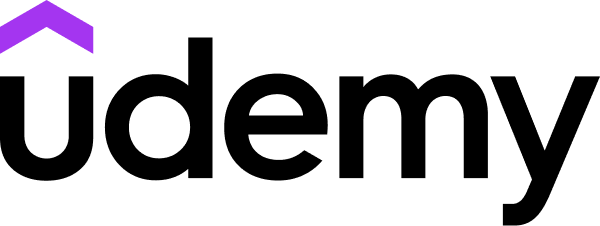

Microsoft Learn
Free Online Course
English
4-5 hours worth of material
selfpaced
Overview
- Module 1: In this module, you'll begin to discover the opportunities for Java developers on Azure.
- Differentiate between types of Java applications
- Explain the opportunities for Java developers on Azure
- Module 2: In this module, you'll learn about running your Java applications on Azure. You'll also choose the best service option among virtual machines (VMs), Azure App Service, serverless functions, Azure Kubernetes Service (AKS), and Azure Spring Cloud.
- Describe and differentiate the Azure deployment options that are available for Java applications.
- Choose the best Azure service for deploying a Java application.
- Module 3: Create a Spring Boot application, connect it to a MySQL database, and then deploy to Azure App Service.
- Develop a Spring Boot web application.
- Connect your application to a MySQL database.
- Deploy the web application to Azure App Service.
- Module 4: You'll learn how to create a Java web application and deploy it to Azure App Service.
- Create a PrimeFaces Java web application.
- Configure your Java project to deploy to Azure App Service.
- Deploy your Java web application to Azure App Service.
- Module 5: In this workshop, you'll go through tasks to deploy Spring Boot microservices to Azure Spring Cloud (ASC).
- Create a new Azure Spring Cloud cluster
- Configure a Spring Cloud Config Server
- Build and deploy a Spring Boot microservice
- Create a Spring Cloud Gateway to access your microservice
- Use Spring Cloud Service Registry to discover your microservice
- Configure distributed tracing to debug a microservices architecture
- Module 6: Send event-based telemetric data in real time to Azure Cosmos DB by using Azure Functions and an event hub.
- Explain event-driven and real-time workloads.
- Create a scenario with simulated telemetric data.
- Send the telemetric data with an Azure function to an event hub.
- Connect another function to this event hub to trigger storage in Azure Cosmos DB.
- Have a look at the metrics in Application Insights to measure the performance and identify potential bottlenecks.
- Module 7: Deploy a Java EE (Jakarta EE) application to JBoss EAP on Azure App Service and bind it to Azure Database for MySQL.
- Create and manage an Azure Database for MySQL instance
- Deploy a Java EE application to JBoss EAP on App Service
- Create a data source and bind the Java EE application to MySQL
- Access and manage the Java EE application on JBoss
- Module 8: Microsoft Learn module to learn Azure Migrate App Containerization with a hands-on lab using Azure App Service for Java web applications
- Discover and containerize your Java web app running on Linux machines using Azure Migrate: App Containerization.
- Build a container image for your Java web application.
- Deploy your containerized application to Azure App Service using Azure Migrate: App Containerization.
By the end of this module, you'll be able to:
By the end of this tutorial, you'll be able to:
In this module, you will:
After you complete this module, you will be able to:
In this module, you will:
By the end of this module, you'll be able to:
After completing this module, you'll be able to:
By the end of this module, you will be able to:
Syllabus
- Module 1: Introduction to Java on Azure
- Introduction
- Java at Microsoft
- Types of Java applications
- Java technologies
- Deployment opportunities on Azure
- Sample Java app deployment
- Check your knowledge
- Summary
- Module 2: Choose the right Azure service for deploying your Java application
- Introduction
- Application deployment types
- Compare the solutions
- Choose the right destination
- Knowledge check
- Summary
- Module 3: Deploy a Spring Boot app to Azure
- Introduction
- Build a Spring Boot application
- Exercise - Create Azure resources and a Java Spring application
- Deploy a Spring Boot application to Azure
- Exercise - Deploy a Spring Boot application
- Knowledge check
- Summary
- Module 4: Deploy a Java web app to Azure App Service
- Introduction
- Overview of a JavaServer Faces application
- Exercise - Create a JavaServer Faces web app on Tomcat
- Exercise - Deploy a Java web app to Azure App Service
- Knowledge check
- Summary
- Module 5: Deploy Spring microservices to Azure
- Introduction
- Create an Azure Spring Cloud instance
- Configure a Spring Cloud Config Server
- Build a Spring Boot microservice
- Build a Spring Cloud Gateway
- Distributed tracing
- Scale Spring Boot microservices
- Summary
- Module 6: Build a real-time event-driven Java solution in Azure
- Introduction
- What is event driven, and how fast is real time?
- Exercise - Build an Azure function to simulate telemetric data
- Databases for event-driven applications
- Exercise - Process the events and store the data in Azure Cosmos DB
- Monitoring and logging
- Exercise - Monitoring and logging
- Knowledge check
- Summary
- Module 7: Deploy a Java EE (Jakarta EE) application to Azure
- Introduction
- Deploy Azure Database for MySQL
- Exercise - Deploy Azure Database for MySQL
- Deploy a Java EE (Jakarta EE) application to JBoss EAP on Azure App Service
- Exercise - Deploy a Java EE (Jakarta EE) application to JBoss EAP on Azure App Service
- View the JBoss EAP administration tools and application logs
- Exercise - Access the JBoss EAP administration tools and application logs
- Knowledge check
- Summary
- Module 8: Migrate Java web applications to Azure App Service
- Introduction
- Azure Migrate App Containerization overview
- Exercise - Set up host environment
- Exercise - Discover your Java web application
- Exercise - Build container image for your Java web app
- Exercise - Deploy app container to Azure App Service
- Check your knowledge
- Summary

